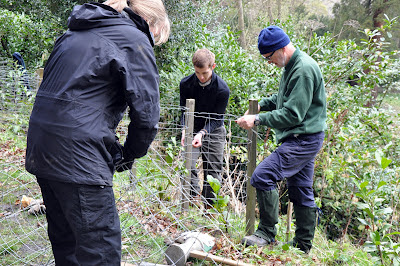If you’re feeling energetic and like to explore, you may consider a gentle meander up into Snipes Dene to see the bluebells which are coming into flower. Look out also for anemone, oxalis, campion, alternate-leaved saxifrage and lots of other emerging woodland flowers. They can be seen on the track edges through the West Woods also.
In Snipes Dene you can find drifts of bluebells close to the track edge near the old carriage drive. These are English bluebells Hyacinthoides non scripta. With a bit of careful study you will spot the subtle differences between our natives and the invasive Spaniard Hyacithoides hispanica. The Spanish garden form has made its way out into woodlands surrounding urban areas and forms a fertile hybrid with the native form. This shares characteristics with both species but means that the pure native form is becoming rarer. The descriptions below can help you to distinguish between the two.
Native bluebells
· have narrow leaves, usually about 1cm or 1.5cm (about half an inch) wide
· have deep blue (sometimes white, rarely pink), narrow, tube-like flowers, with the very tips curled right back
· have flowers mostly on one side of the stem only, and distinctly drooping, or nodding, at the top
· have a distinct, sweetish scent
· Inside the flowers, the anthers with the pollen are usually cream
 |
Close up of native bluebell flower. Note the recurved petals.
|
Spanish bluebells
- have broad leaves often 3cm (over an inch) wide
- have paler blue (quite often pink and white ones too), conical or bell-shaped flowers that have spread-out tips
- have flowers all round the upright stem
- have almost no scent
- inside the flowers, the anthers with the pollen usually blue (although this may vary a little)
Our native wild flowers are pollinated by a wider variety of insects than most exotic species. So what can you do to help save the native UK bluebell? Is there anything you can do? Well there are some small scale plans. Check your own garden bluebells. If they are the Spanish form, and this is going to sound harsh, you could dig them up and dispose of them thoroughly. I have begun doing this at home, to make way for some English bluebell bulbs. These can be bought from reputable plant nurseries or on line from native bulb specialists.
Have you spotted any bluebells or do you have them growing in your garden?
Add your own bluebell sightings to the National Trust Bluebell Watch map!

















.jpg)
.jpg)











